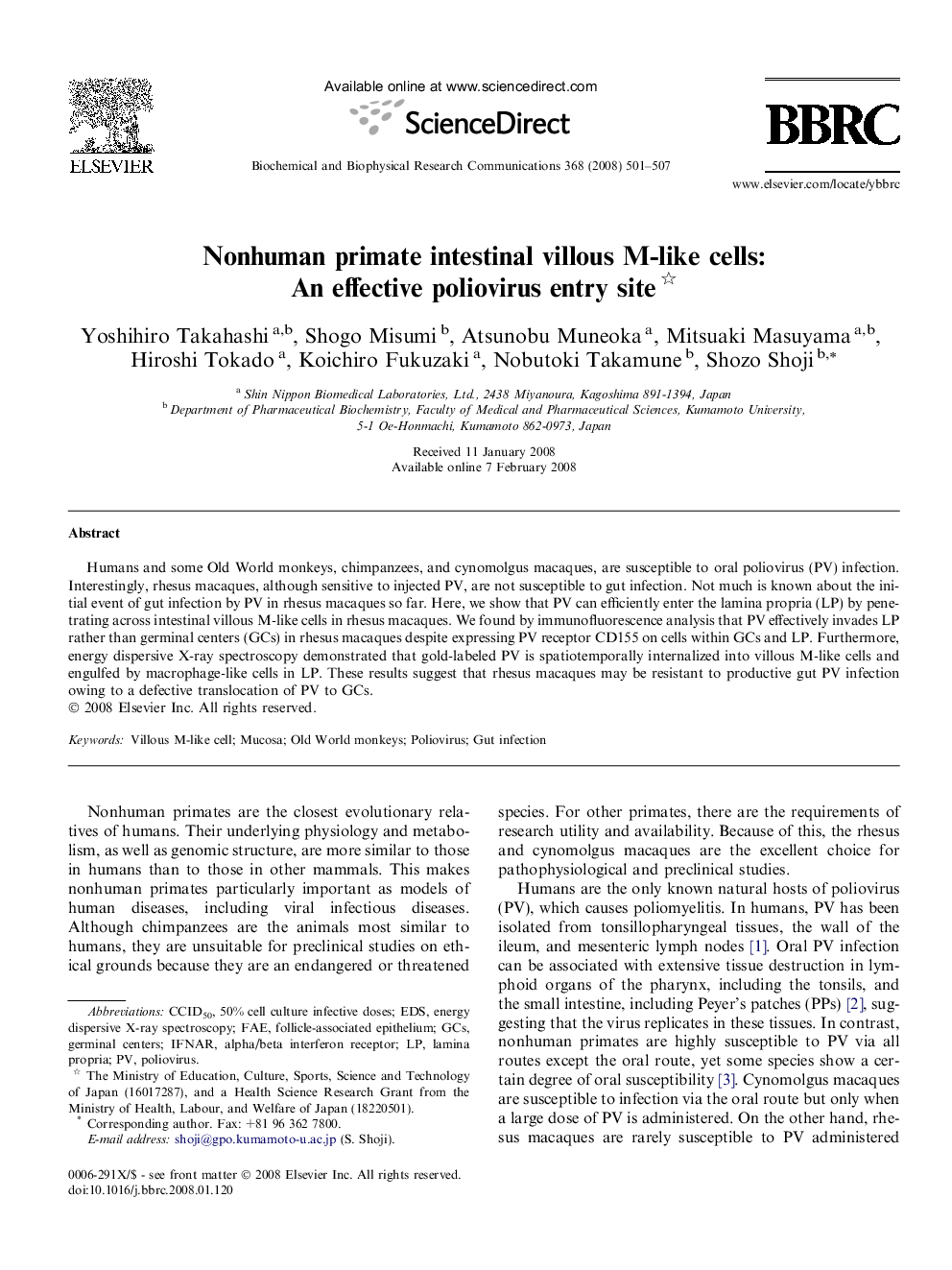| Article ID | Journal | Published Year | Pages | File Type |
|---|---|---|---|---|
| 1936164 | Biochemical and Biophysical Research Communications | 2008 | 7 Pages |
Humans and some Old World monkeys, chimpanzees, and cynomolgus macaques, are susceptible to oral poliovirus (PV) infection. Interestingly, rhesus macaques, although sensitive to injected PV, are not susceptible to gut infection. Not much is known about the initial event of gut infection by PV in rhesus macaques so far. Here, we show that PV can efficiently enter the lamina propria (LP) by penetrating across intestinal villous M-like cells in rhesus macaques. We found by immunofluorescence analysis that PV effectively invades LP rather than germinal centers (GCs) in rhesus macaques despite expressing PV receptor CD155 on cells within GCs and LP. Furthermore, energy dispersive X-ray spectroscopy demonstrated that gold-labeled PV is spatiotemporally internalized into villous M-like cells and engulfed by macrophage-like cells in LP. These results suggest that rhesus macaques may be resistant to productive gut PV infection owing to a defective translocation of PV to GCs.
